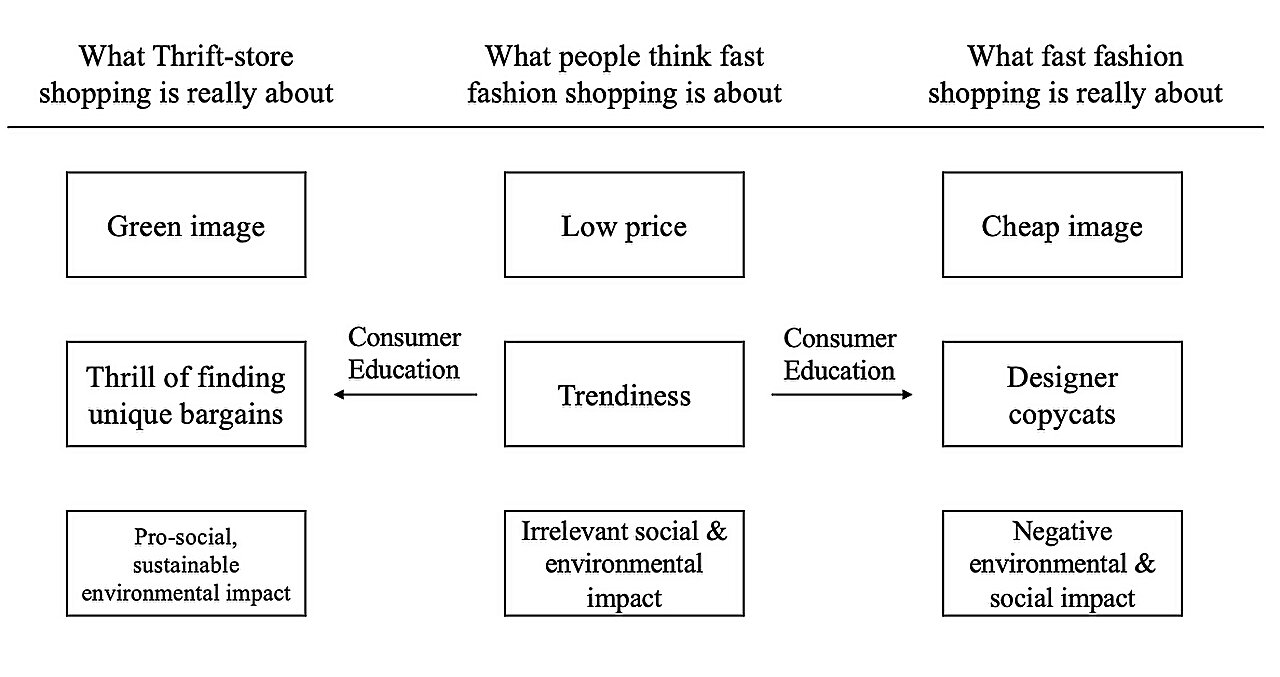For the last three decades, the advent of “fast fashion” has disrupted the traditional fashion cycles by capitalizing on retailers’ and consumers’ responsiveness to the novelty of new fashion trends. Some fast fashion retailers go as far as delivering new apparel designs every two weeks—about 26 times per year, or 13 times more than traditional fashion.
A study just published in the Journal of Sustainable Marketing by Yunzhijun Yu, Claudia Lizzette Gómez Bórquez, and Judith Lynne Zaichkowsky, Distinguished Professor of Marketing at SFU’s Beedie School of Business, finds that the allure of fast fashion comes at a significant environmental cost and encourages consumers to adopt more sustainable alternatives.
The term “fast fashion” encapsulates a business approach that rapidly churns out clothing inspired by current trends, allowing consumers to stay current on fashion trends without breaking the bank. Retail giants like Zara, H&M, and Shein have epitomized this model, enticing a young consumer base aged 20 to 26 eager to stay fashion-forward with tight budget constraints. However, as the study delves into this ongoing trend, it unravels devastating environmental consequences.
In 2018, over 11.3 million tons of clothing and textiles were discarded, creating serious environmental challenges. Further, the textile dyeing industry—a fundamental aspect of fast fashion—is one of the world’s leading polluters of clean water. Clothing factories in developing countries known for cheap labor often contribute to large-scale pollution, affecting both the environment and public health. Countries like Bangladesh, Cambodia, and Vietnam grapple with health issues due to pollution caused by these factories.
“Most consumers have very little insight or interest to the production systems for cheap fast fashion,” says Zaichkowsky. “The water used to grow cotton or the dyes released into streams or rivers are not part of the decision-making process when purchasing clothing.”
One of the study’s key findings highlights the potential of the second-hand clothing market as an eco-friendly way to deal with the fast fashion conundrum. The study shows that the second-hand market can provide consumers with high-quality brands at discounted prices. However, fast fashion items in this market aren’t as attractive due to their initial low prices, leading to a cycle of disposal rather than resale.
Efforts to tackle this issue have involved education as a tool to shift consumer behavior away from fast fashion. The study discusses the potential of educational interventions to steer consumer choices towards more responsible and environmentally conscious options. However, it also points out a critical challenge: the gap between consumer attitudes and actual behaviors is difficult to bridge and will require a more nuanced approach beyond just raising awareness.
The study also emphasizes the importance of multifaceted strategies that extend beyond education, aiming to drive tangible behavioral changes and calls for a collective effort involving various stakeholders—government, universities, non-profit organizations, and fashion brands—to steer the fashion industry towards sustainability.
Another potential solution is steering consumers towards more circular business models—that is to say, reselling or repurposing their clothing items in an effort to create more value and reduce waste from clothing items that would otherwise be discarded into landfill. By doing so, the industry can create more value for customers and significantly reduce waste.
“The goal is for consumers to treat their clothing with respect rather than disposable packaging,” says Zaichkowsky. “This is hard sell in a market where ripped jeans are considered a mainstay in fashion.”
More information:
Yunzhijun Yu et al, Mitigating Trendy Cheap Fast Fashion’s Negative Impact, Journal of Sustainable Marketing (2023). DOI: 10.51300/JSM-2023-108
Citation:
Sustainable alternatives key to combating fast fashion’s environmental toll, study finds (2023, November 3)
retrieved 3 November 2023
from https://phys.org/news/2023-11-sustainable-alternatives-key-combating-fast.html
This document is subject to copyright. Apart from any fair dealing for the purpose of private study or research, no
part may be reproduced without the written permission. The content is provided for information purposes only.
Denial of responsibility! My Droll is an automatic aggregator of Global media. In each content, the hyperlink to the primary source is specified. All trademarks belong to their rightful owners, and all materials to their authors. For any complaint, please reach us at – [email protected]. We will take necessary action within 24 hours.


